Liza Perrat's Blog, page 28
September 18, 2012
The Australian Bookshelf Blog Review

Many thanks to Jayne Fordham for her review of Spirit of Lost Angels on The Australian Bookshelf blog. Read as part of the Australian Women Writers Challenge.
September 17, 2012
A TALE OF THE FLESH
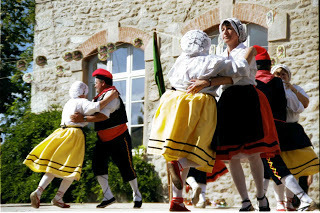
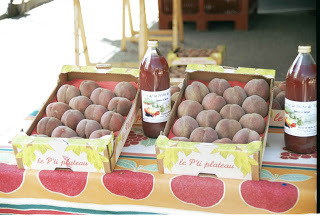
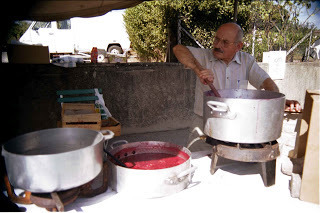
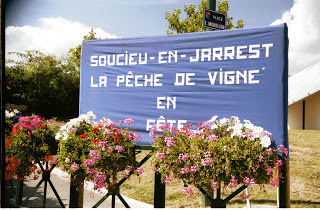
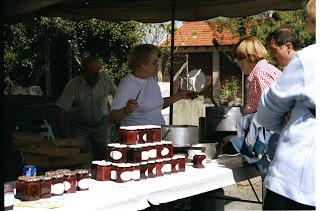
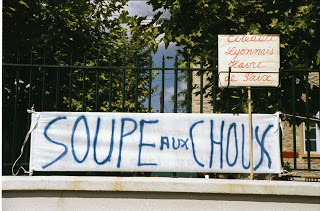
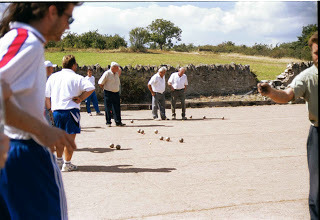
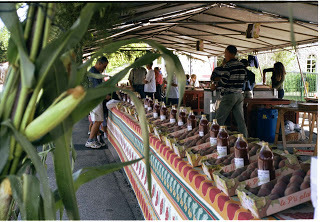
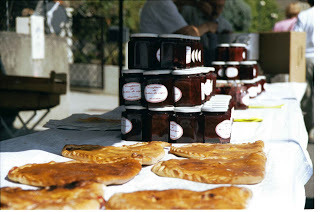
Stretched across the stone facade of the ancient village, a wide banner yawns into the soughing air:
Discover the bush peach in all its guises in Soucieu-en-Jarrest, where the Romans once roamed.
Snug in the twist of a Monts du Lyonnais valley, twenty-odd kilometers west of Lyon, the village of Soucieu-en-Jarrest minds its own business, and on the first Sunday of September its business is the bush peach.
Ruins of the fortified stone wall lost in the revolution, and a sign advertising soupe aux choux, herald the village entrance. Fearing a revolution of the intestinal kind, I decline the cabbage soup and head for the fruit, past tractors and harvest equipment––reminding me that this is, essentially, a farming community.
‘What’s the big deal about peaches?’ I ask a local farmer.
‘Not just a peach, madame, but our own succulent fruit with flesh the colour of blood. The bush peach is grown alongside the vines,’ he explains. ‘Susceptible to the same diseases as the vines but quicker to develop the signs, the vine growers plant peach trees next to their vineyards to warn them of potential problems.’ He smiles. ‘And voilà, the bush peach has been part of our arboricultural patrimony since the seventeenth century.’
So, with its questionable history as martyr, I ask myself if the humble bush peach can hold its head high as a separate identity.
My nostrils guide me to freshly baked chaussons––stewed bush peach turnovers––the golden pastries lined up like slippers in a dormitory.
Alongside the turnovers, a man toils over an army-issue cauldron of stewing peaches. A woman breaks up the fruit, and hurls it into the bubbling magenta mélange.
‘Thirty-five minutes to stew a peach, and an hour for jam, but don’t peel the fruit,’ she warns me, waving her wooden spoon like an off-duty martinet.
To avoid being crushed like the wine grapes, I dodge a purple clown on stilts, a troop of majorettes filing past in his ungainly wake. I skip out of the firing line of thrashing pom-poms and take cover in the stall selling bush peach nectar and wine.
‘You can smell those peaches, n’est-ce pas, madame?’ the man says, offering me a glass of white wine.
‘Delicious,’ I say, savouring the intense, yet charming aroma.
‘If madame would care to try the red? An exquisite blend of blackberry, blackcurrant and raspberry, and perhaps the rosé too?’
Nicely mellowed after three glassfuls, I thank him and leave the man to his serious buyers.
Slurping on a double bush peach sorbet cone, I see the Groupe Folklorique de Thurins is already swinging, the women’s traditional red and yellow skirts twirling as their breeches-clad partners spin them about the stage.
As the dancers flounce off, I head to the library where a storyteller––looking all the part in a toga––is narrating a Roman tale of intrigue.
‘In 43 BC, Lyon was the capital of Gaul, and called Lugdunum. The Romans got their water from aqueducts, the ruins of which we can still see all over the Monts du Lyonnais.’
The whites of the children’s eyes flash in the darkened room as the storyteller unfolds a tale of stolen jewels, culminating in a bloody sword duel atop an aqueduct tower.
Strategically placed near the bar, serious competitors are engaged in a pétanque match. The French take their bowling game as seriously as their wine, precisely measuring questionable distances. Soaking up the sun, I sip my tangy bush peach cocktail and watch them exclaiming and waving their arms as the metal ball lands where it should, or shouldn’t.
As I taste the surprisingly pleasant union of white cheese drowned in bush peach sauce, Mr. Loudspeaker orders the crowd to gather for the grande finale.
‘And now, ladies and gentlemen, Miss Bush Peach and Mr. Lyonnaise Hills Wines will be united.’
We enthusiastically applaud the chosen young girl and boy grinning under their dubious honour, a few wolf whistles ringing from the edges of the crowd.
The sun begins its westward arc towards the Monts du Lyonnais, the crisp cusp-of-autumn air nibbling at me. Mothers drag sweaters from heavily-laden bags, the party winds down and a playful breeze whispers centuries of farming secrets across the fields, orchards and vineyards.
September 16, 2012
Many thanks to Anne Cater for her generous blog review of...
A big thank you to Darlene Elizabeth Williams for her in-...
September 13, 2012
Many thanks to Mirella Patzer for her lovely review of Sp...
September 8, 2012
Need inspiration for writing historical fiction? Meet Georges and his cutting-edge cycling
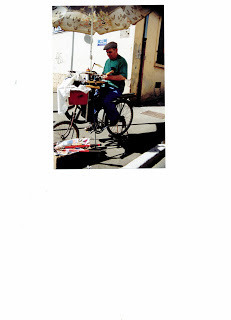
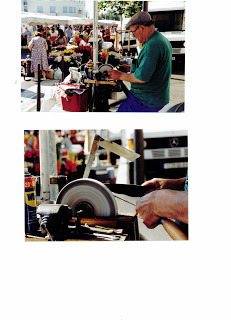 Perhaps because I grew up in Australia, a country with a past so young, I have always been awed by history. Twenty years ago, I moved to a rural French village and found myself steeped in antiquity, age-old culture and monuments. Writing about it became the next logical step.
Perhaps because I grew up in Australia, a country with a past so young, I have always been awed by history. Twenty years ago, I moved to a rural French village and found myself steeped in antiquity, age-old culture and monuments. Writing about it became the next logical step.Surrounded by history certainly gives me ideas for stories, but it is also the local people who provide inspiration for the characters of my historical tales. One such person is Georges, on whom I based Emile, my heroine’s father in Spirit of Lost Angels.
As he has done every Saturday morning for two decades –– so he tells me –– Georges lugs his strange-looking bicycle along to the marketplace. And there he pedals in earnest, all morning, amidst convivial banter, fruit and vegetables still glistening with dew, and boudins and saucissons displayed like plump limbs. But he never leaves his spot.
Curious, I am drawn to this cycling-sur-place, and learn that Georges is a rémouleur, (knife sharpener or grinder), vestige of a French profession dating back to 1300. Exercising his activity in the village streets, the grinder proposed his services to sharpen knives, scissors and razors, as a source of extra income.
‘I’m a carpenter by trade,’ Georges says, not stopping to catch his breath. ‘I had to sharpen my tools, so I taught myself, and adapted my own bicycle,’ he adds, caressing his slate block with a dangerous-looking Opinel.
The rémouleur’s equipment developed over time to become relatively sophisticated but, in the beginning, a simple frame fitted with a heavy sandstone grindstone was used. A wheelbarrow made transportation less tiring. The rémouleur added a water reserve to lubricate the grindstone, then the famous pedal made its debut, permitting him to work the grindstone with his foot.
‘How many kilometres do you cycle in a morning?’ asks a customer, stowing his newly-sharpened Swiss Army knife between punnets of fleshy raspberries and slices of pâté de campagne.
‘No idea,’ Georges replies, as he wets another blade, and passes it across his revolving grindstone. ‘But I must’ve been around the world twice in twenty years.’ With a rueful smile Georges then says he’s never been out of France.
Five minutes later, the grindstone having completed its work, Georges takes a break from his pedals to work the knife across his slate slab.
‘For the finishing touches,’ he explains, continually lubricating the knife from a pot of water dangling from the handle bars. ‘You see, stroke the bevel against the stone, at right angles, like this,’ Georges demonstrates, manipulating the knife with the same gentleness one would stroke a kitten.
George’s trade lived until the middle of the 20th century until the quality of steel and its treatment meant there was less call for sharpening. Indeed, in today’s technological era, I wonder if Georges truly makes a justifiable contribution to his income. But the continual dribble of customers throughout the morning, at an average of 4 euros per item, answers my question.
As the church bell chimes midday, signalling the end of today’s market, a woman approaches perhaps one of the last members of a profession on the verge of extinction. She draws a large carving knife from folds of lettuce leaves and rhubarb stems.
‘Can I leave this with you?’ she asks.
‘It’s a bit late, come back next week,’ the knife-grinder says with a nonchalant wave of his hand. For Georges is not in a hurry. He may cycle all morning, but he isn’t going anywhere. Just yet.
September 6, 2012
OSCAR: Sometime in 1998 - 3rd September 2012
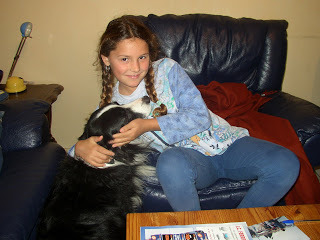
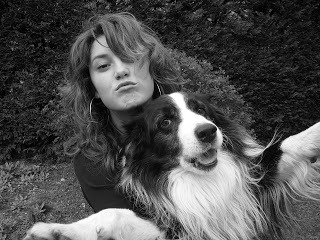
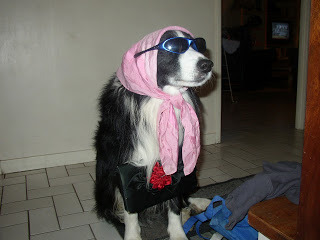
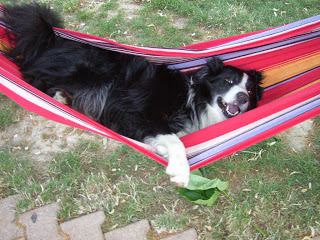
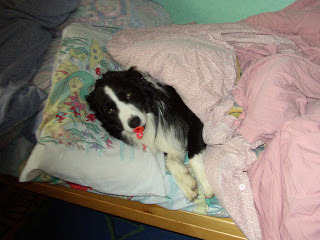
Well, my writing, and everything else, has been at a bit of a standstill this week, as my family come to terms with the loss of our beloved border collie, Oscar, aged 14.We had 13 fabulous years with him... he grew up with my children and was their best play mate, never once growling at them when forced to dress up, jump on a trampoline, be a pack horse, etc...Now there is no smiling face or wagging tail to greet my at the gate, no waterbowl to fill, no one to take for a walk...Ah dear, so lovely to have pets, but so heart-breaking when we have to say goodbye.
August 28, 2012
Spirit of Lost Angels Interview
August 27, 2012
SATURDAY AFTERNOON AT THE CHATEAU
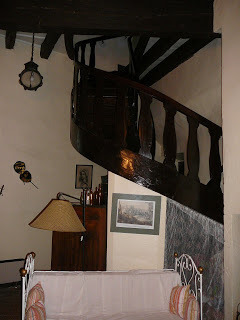
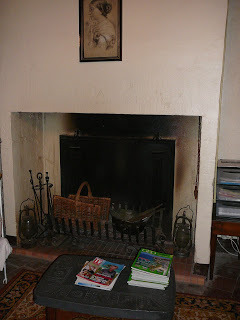
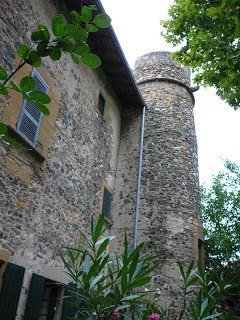
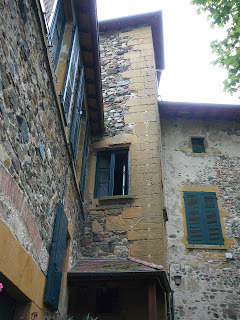
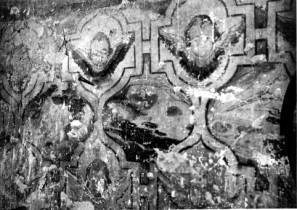
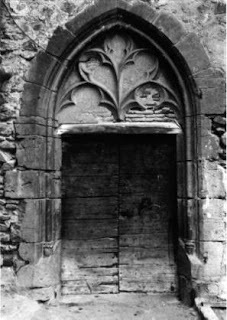
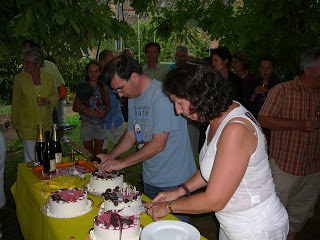
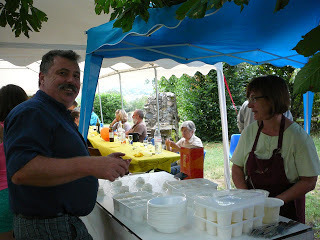
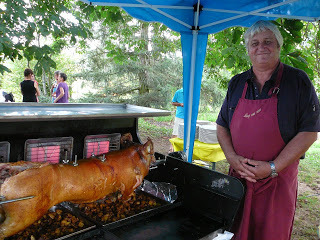
My next book in L’Auberge des Anges series – Angel of Roses – is set in 14th century France, so it was with eagerness and armed with notepad and camera, that I attended a friend’s 50th birthday celebration last Saturday. For this was no mundane garden party; it was to be held in his family’s medieval castle, half an hour west of Lyon.
As I strolled around the lush gardens, maintained by the sole occupant of the castle these days – my friend’s elderly aunt – a glass of champagne in one hand, a plate of canapés in the other, I knew this would be the perfect place around which to frame my medieval tale. My nostrils twitching with the tantalizing aroma of pig roasting on the spit, I could almost see bejewelled noblewomen gliding around the grounds, and hear the whispers of wimpled servants. I imagined sleek horses galloping off through the arched gateway beneath the imposing tower, towards the gently-sloping countryside. I sensed the peoples’ anxiety across the centuries, about the Hundred Years’ War and the Black Death, of famine and tithes. I felt I was touching the past.
In true French style, the aperitif lasted almost two hours, by which time the guests had consumed so much champagne they could barely stagger to the chairs and tables set up beneath the large tent.
Salads of different varieties were served, then potatoes sautéed in the pig fat (forget that diet!), tasty ratatouille and tender slices of roasted pig. Fromage blanc with generous dollops of double-cream followed, the meal culminating in candles, song and cake: chocolate or raspberry topped ice-cream gateau.
His guests sated, our host took us on a tour of the castle his family had purchased after the French revolution. We began in the central courtyard containing the largest well I’ve ever seen, where he attempted to describe the history of the castle. Despite continual interruptions from drunken school friends, with bad medieval jokes, I did manage to glean that before construction of the Château de Sain-Bel in 1109, the village was located next to the parish church, on the right bank of the river. However, when the castle was built on the Montbloy hill, the villagers moved to the left bank to form a bourg castral, huddled within the protective castle walls.
We shuffled across to the rectangular chapel, built between 1473-1476, and gazed up at the medieval beamed ceiling, and around the walls at the vestiges of coloured paintings.
Passing by the ancient kitchens, we climbed the crumbling stone steps of the Colombier Tower. Equipped for artillery, I imagined the people looking out across the vast countryside, for signs of marauding, pillaging troops on horseback.
It was late in the evening when, my notebook bulging, my camera carefully tucked away, I said goodbye to my friends – old friends of today, and new friends of yesterday.



